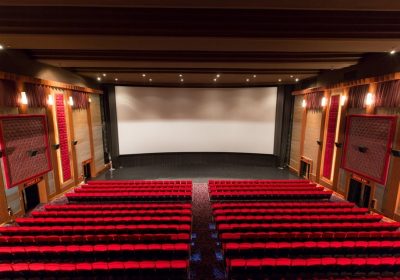Diwali Puja Samagri: Essential Items for Festive Worship
Overview
- Condition: New
Description
Diwali, the festival of lights, holds profound spiritual significance for Hindus worldwide. It celebrates the victory of light over darkness and good over evil, marking a time of renewal, prosperity, and familial bonding. Central to Diwali celebrations is the tradition of performing puja, or worship, which involves a meticulous arrangement of specific items known collectively as “Diwali Puja Samagri.” These essential items play a crucial role in facilitating the rituals and creating a sacred atmosphere during the festivities. This article delves into the significance of each component of Diwali Puja Samagri and how they contribute to the spiritual experience of festive worship.
1. Diya (Oil Lamp)
The diya, or oil lamp, is synonymous with Diwali as it symbolizes the victory of light over darkness and the triumph of knowledge over ignorance. Traditionally made of clay, the diya is filled with oil or ghee (clarified butter) and lit with a cotton wick. During Diwali, multiple diyas are placed around the home, in the puja room, and at the entrance to welcome prosperity and ward off negativity. Lighting diyas is not only a ritualistic act but also a way to illuminate the surroundings symbolically and spiritually.
2. Incense (Agarbatti)
Incense sticks, or agarbatti, are an integral part of Hindu rituals and are used to create a fragrant atmosphere during puja. The scent of incense is believed to purify the environment and create a conducive ambiance for meditation and spiritual connection. Different fragrances such as sandalwood, jasmine, and rose are commonly used during Diwali Puja to invoke a sense of tranquility and sacredness.
3. Rangoli Powder
Rangoli is a traditional art form where intricate patterns and designs are created on the floor using colored powders, rice, or flower petals. It is believed to bring good luck and prosperity to the home. Diwali Puja Samagri often includes vibrant rangoli powders in auspicious colors like red, yellow, green, and white. These powders are used to create beautiful designs outside the entrance of the home or in the puja room, serving as a welcoming gesture to guests and invoking blessings from the divine.
4. Puja Thali
A puja thali is a decorative plate or tray that holds all the essential items required for worship. It typically includes small containers for kumkum (vermilion powder), chawal (rice grains), camphor, and a small bell. The puja thali not only organizes these items neatly but also serves as a focal point during the puja ceremony, enhancing the aesthetic and spiritual ambiance of the ritual.
5. Murti or Idol
Diwali Puja involves the worship of various deities, prominently Lord Ganesha and Goddess Lakshmi. A small murti (idol) or picture of these deities is placed on the puja thali or in a prominent place in the puja room. Devotees offer prayers, perform aarti (ritual of waving lighted lamps), and seek blessings for prosperity, wealth, and well-being for their families during the festive occasion.
6. Sweets and Fruits
Offering sweets and fruits to the deities is a customary practice during Diwali Puja. It symbolizes sharing the bounty of the harvest season and seeking blessings for abundance and prosperity. Diwali Puja Samagri includes traditional sweets like ladoos (sweet balls made of flour and sugar) and fruits such as bananas, apples, and coconuts, which are offered to the deities as part of the ritualistic worship.
7. Holy Water (Gangajal)
Gangajal, or holy water from the sacred Ganges River, holds immense spiritual significance in Hinduism. It is believed to purify the soul and surroundings when used during religious rituals. Diwali Puja Samagri often includes a small vial of Gangajal for sprinkling on devotees or for consecrating the puja items, thereby sanctifying the atmosphere and invoking divine blessings.
8. Aarti Diya (Oil Lamp for Aarti)
The aarti diya is a special oil lamp used during the aarti ceremony, where a flame is waved in front of the deity while singing hymns or prayers. It symbolizes offering light to the divine and seeking blessings for prosperity and happiness. Diwali Puja Samagri includes an aarti diya along with cotton wicks and oil for performing the aarti ritual, which is a highlight of the Diwali Puja ceremony.
9. Camphor (Kapur)
Camphor is used during Diwali Puja for performing aarti and other rituals. When lit, camphor burns bright without leaving residue, symbolizing the burning away of ignorance and ego. It is believed to purify the atmosphere and fill the surroundings with positive energy. Diwali Puja Samagri includes small cubes or tablets of camphor for use during the puja ritual, enhancing the spiritual ambiance of the worship ceremony.
10. Traditional Clothes
Wearing traditional attire during Diwali Puja adds to the festive spirit and reverence for the occasion. Diwali Puja Samagri may include a small piece of cloth or a dupatta (shawl) in auspicious colors like red, yellow, or white, which is draped over the idols or murtis during the puja ceremony as a mark of respect and devotion.
Performing Diwali Puja with Samagri:
- Preparation: Begin by cleansing and purifying the puja area to create a sacred space for worship.
- Invocation: Invoke the blessings of Lord Ganesha and Goddess Lakshmi, the deities of prosperity and wisdom, to bless the home and family.
- Offerings: Offer sweets, fruits, and other items to the deities while reciting prayers, mantras, and hymns dedicated to them.
- Aarti: Light the aarti diya and perform aarti while waving it in front of the idols or pictures of the deities. Sing devotional songs and express gratitude for the blessings received.
- Prayers: Offer heartfelt prayers for health, happiness, and success for yourself, your family, and loved ones.
- Distribution: After completing the Diwali Puja, distribute prasad (blessed food offerings) to family members and guests as a symbol of sharing joy and blessings.
Conclusion
Diwali Puja Samagri encompasses essential items that facilitate the performance of rituals with devotion and authenticity during the festival of Diwali. Each item holds significant spiritual symbolism and contributes to creating a sacred atmosphere where devotees can connect with the divine and seek blessings for prosperity and happiness. By using Diwali Puja Samagri, individuals and families uphold centuries-old traditions and celebrate Diwali with reverence, unity, and spiritual fulfillment, fostering a sense of harmony and well-being in their homes and communities.








Leave feedback about this
You must be logged in to post a review.